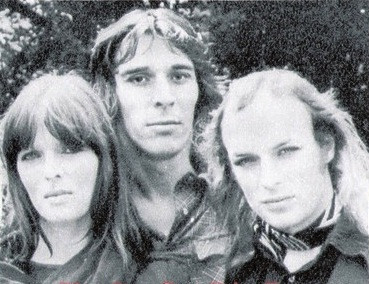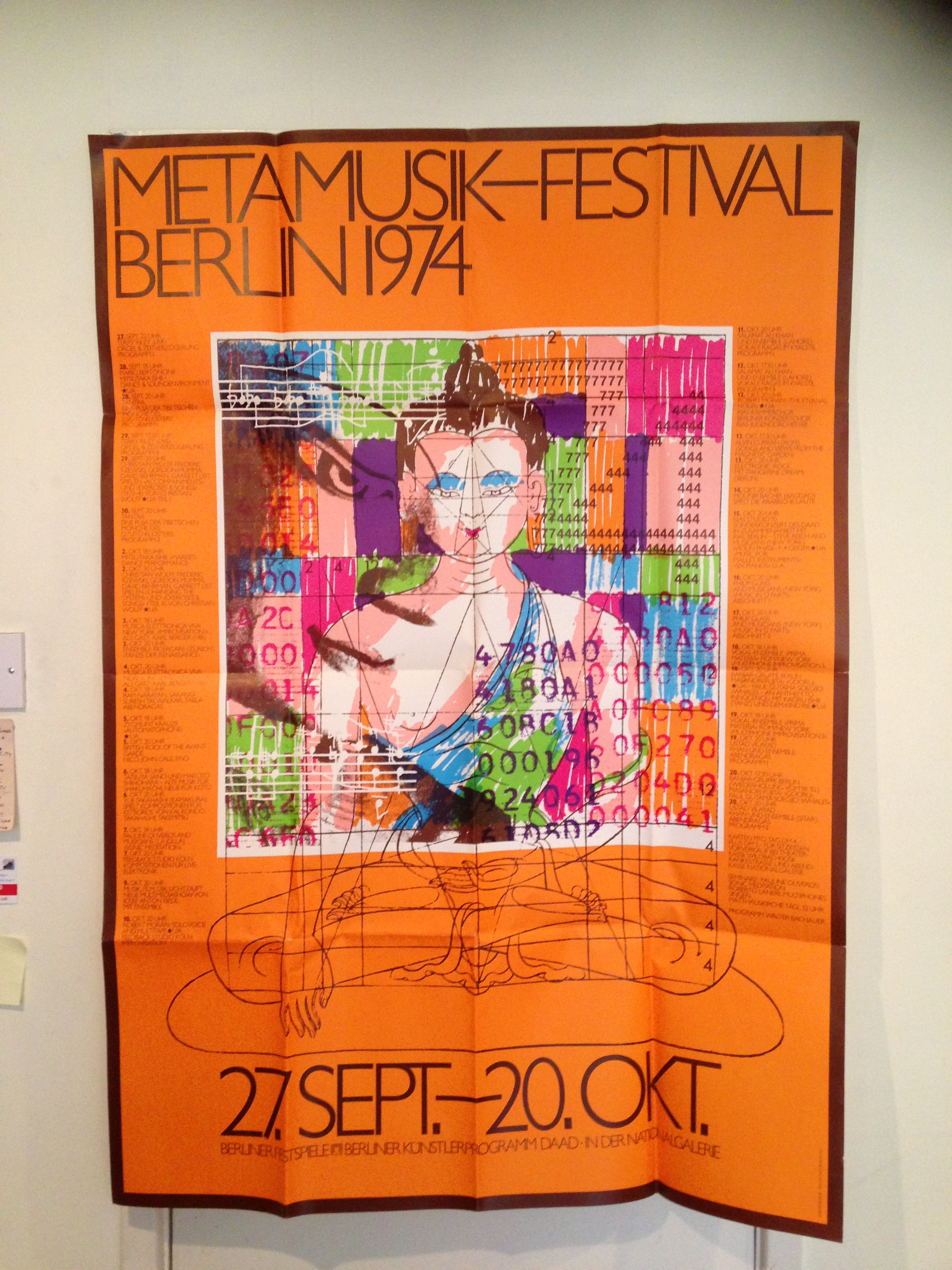In October 1974, the stark reality of the Cold War East Germany was met with the flamboyant presence of Brian Eno, as recalled in a vivid anecdote from a Berlin concert featuring John Cale, Nico, and Eno himself. Border guards at Checkpoint Charlie, accustomed to the drabness of the era, were visibly taken aback by Eno’s green hair and the unconventional aura surrounding the trio. This crossing into East Berlin was a prelude to a performance at the Meta Musik-Festival, a month-long event showcasing avant-garde musical pioneers.
 Brian Eno, John Cale, and Nico in 1974
Brian Eno, John Cale, and Nico in 1974
Nico, despite being part of the group, remained in West Berlin due to passport complications. However, for her, Berlin held a deeper personal history. It was the city of her childhood, where she lived with her mother from 1940 to 1954, working as a seamstress and saleswoman before her transformative move to Paris and reinvention as Nico. Her connection to Berlin added another layer to the performance’s context, grounding the avant-garde experiment in personal history and the city’s complex identity.
The Meta Musik-Festival was an ambitious undertaking, gathering luminaries of experimental music. Besides John Cale, Nico, and Eno, the lineup boasted names like Terry Riley, Steve Reich and Musicians, Philip Glass Ensemble, Tangerine Dream, and many others. The festival was inspired by the earlier success of a London concert at the Rainbow Theatre, where Nico, John Cale, Eno, and Kevin Ayers shared a bill. This event was quickly immortalized in the live album June 1, 1974, highlighting the collaborative spirit of the era’s avant-garde scene. While Ayers couldn’t join for the Berlin date, the trio of John Cale, Nico, and Eno carried the torch under the banner of “British Rock of the Avant-Garde.”
The venue itself, the Neue Nationalgalerie, was a modernist masterpiece designed by Mies van der Rohe. Its steel and glass structure, built in 1968 amidst Berlin’s still-healing wartime scars, provided a striking backdrop for the concert. The audience, largely composed of students, sat on white polystyrene cushions, creating a stark, almost clinical setting for the unfolding musical experiment. Dimmed lights and focused spotlights on the performers emphasized the theatrical and experimental nature of the event.
The performance was structured to showcase the distinct talents of John Cale and Nico. Nico’s set drew heavily from her haunting albums The Marble Index and Desertshore, featuring tracks like “Frozen Warnings,” “No One Is There,” “Janitor of Lunacy,” and “Mutterlein.” She also previewed songs from her then-new album, including “You Forgot to Answer” and her rendition of The Doors’ “The End.” John Cale’s performance was equally compelling, featuring tracks like “Guts,” “Buffalo Ballet,” and “Fear,” alongside his interpretations of Lou Reed’s “I’m Waiting for the Man” and “A Child’s Christmas in Wales.”
A pivotal moment of John Cale’s set was “Fear,” where Eno’s prepared wine glasses became integral to the performance. Eno created delicate, ringing sounds by tapping the water-filled glasses, which escalated into a dramatic climax as John Cale‘s song reached its peak. Eno then shattered the glasses, a gesture that injected a Fluxus-inspired element of performance art into the concert, blurring the lines between music and action.
However, the Berlin audience, known for its direct engagement and political awareness, responded with a mixture of fascination and dissent. In 1974 Berlin, still a hotbed of political activism with groups like the Red Army Fraction active, audiences were not passive. Initial heckling and booing escalated when Nico chose to perform “Das Lied der Deutschen,” the German national anthem. While the post-war government had adopted only the third verse, focused on unity and peace, Nico’s performance included the historically loaded and nationalistic original verses.
 Meta Musik Festival Audience in Berlin
Meta Musik Festival Audience in Berlin
The audience’s disapproval grew into shouting and chanting as Nico continued, seemingly unfazed. John Cale responded to the escalating tension with powerful, Rachmaninoff-esque piano chords, while Eno contributed to the chaotic soundscape with synthesizer-generated war-like noises. The audience reaction became physical, with dozens of polystyrene cushions thrown towards the stage, transforming the performance space into a scene of anarchic energy. Amidst this chaos, Nico remained at the center, seemingly undisturbed, singing the controversial anthem. This powerful image evoked reflections on Berlin’s turbulent history and Nico’s own childhood experiences during wartime, leaving a lasting impression on those present and raising questions about the intent and impact of Nico’s provocative performance choice. The evening became a potent blend of avant-garde music, performance art, and politically charged audience interaction, indelibly marking the Berlin cultural landscape of 1974.

